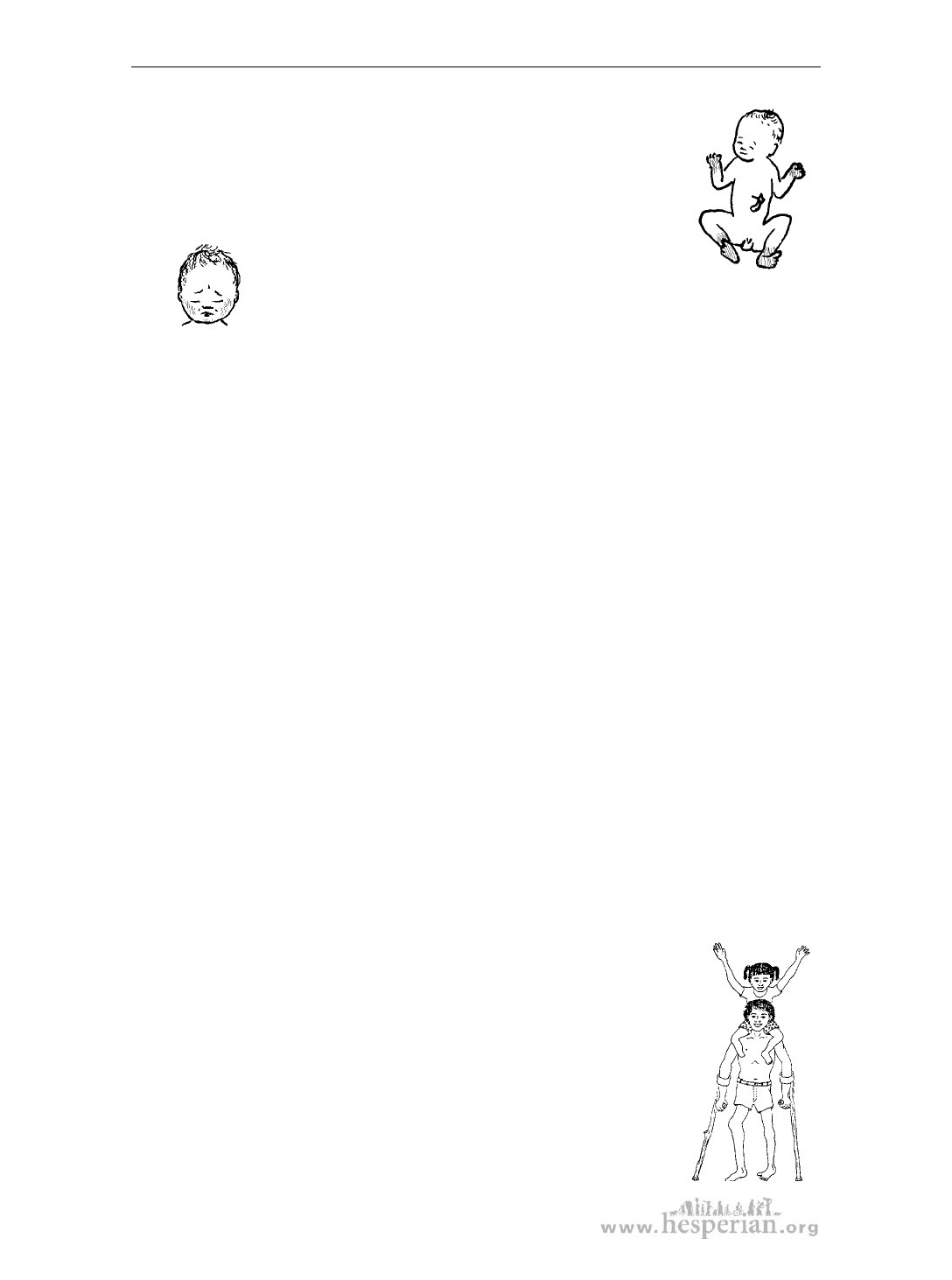
Chapter 14: The first few hours after the birth
Color
The baby should be a normal color within a few hours of the birth.
If the baby stays blue
• If a baby’s hands and feet are still blue, but the baby is warm,
there is probably not a problem. Some babies’ hands and
feet stay blue for 1 or 2 days after the birth.
• If the baby’s lips or face are still blue one hour after
birth, the baby may have a problem with his heart or lungs.
He may also need oxygen. Place the baby skin to skin with the
mother, and cover them to stay warm. Go to the hospital now.
If the baby looks yellow
If the baby seems yellow less than a full day and night after the birth, he may have
jaundice or an infection. See page 279, and get medical help.
If the baby is pale
A pale, limp baby may be anemic or have other problems. Get medical help now.
If the baby is very red
A very red baby may be OK. Watch him carefully for a week for signs of jaundice.
Get medical help as soon as possible if the baby becomes yellow, starts breathing
fast, or has trouble breastfeeding.
Baby has birth defects
When you look a baby over from head to toe, you may see signs that she has an
illness or disability. Or you may see that the baby is somehow different from other
babies. These differences or disabilities may be called birth defects. Birth defects are
sometimes small, and not dangerous, like cleft lip. Or they may be very serious
and life threatening, like a large opening in the spine (spina bifida). If you find
anything unusual, get medical help.
If the baby has a disability, the parents may be very accepting, or they may not.
Some parents think that disabilities are caused by curses or bad luck. Others feel
sad that their child is not the way they imagined, or not like other children. They
may feel overwhelmed by the extra help that they may need to give a disabled
child. Parents of disabled children often need extra support.
Help the parents:
1. find good medical care for their child.
2. learn about the child’s special needs.
3. learn about the child’s strengths. For example, a child who
will not walk because her legs are not formed normally, may
have very strong arms and hands and be able to do many
useful things with them. The same child may also be very
intelligent and able to do useful things with her mind.
266
A Book for Midwives (2010)